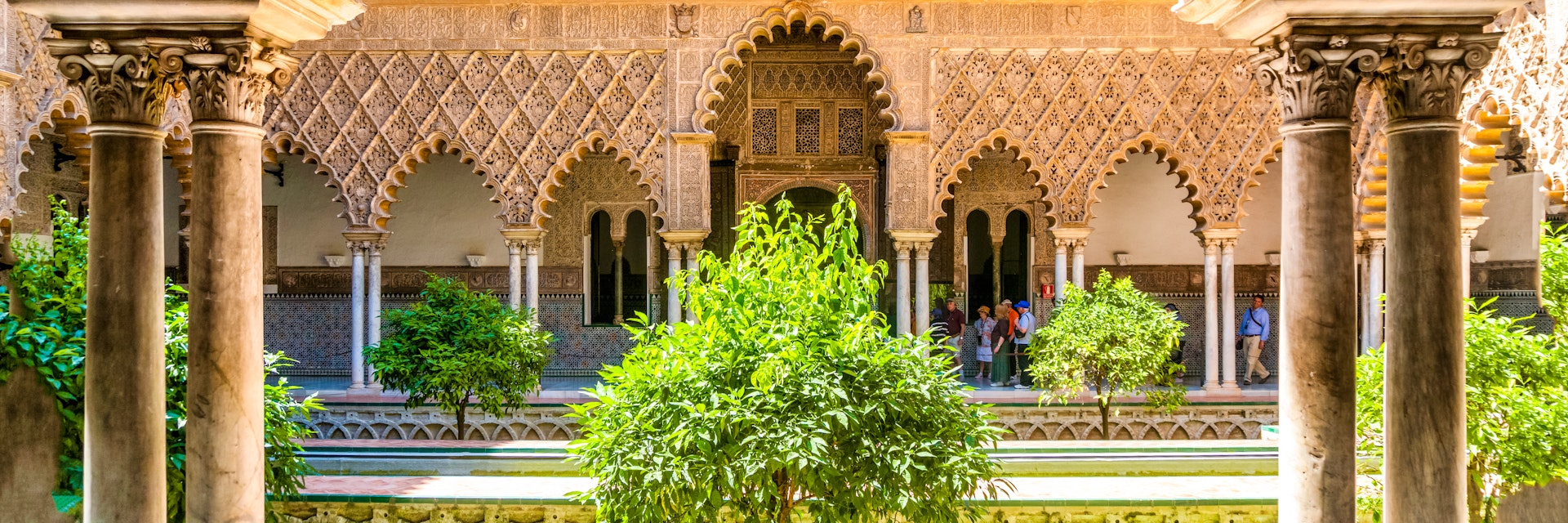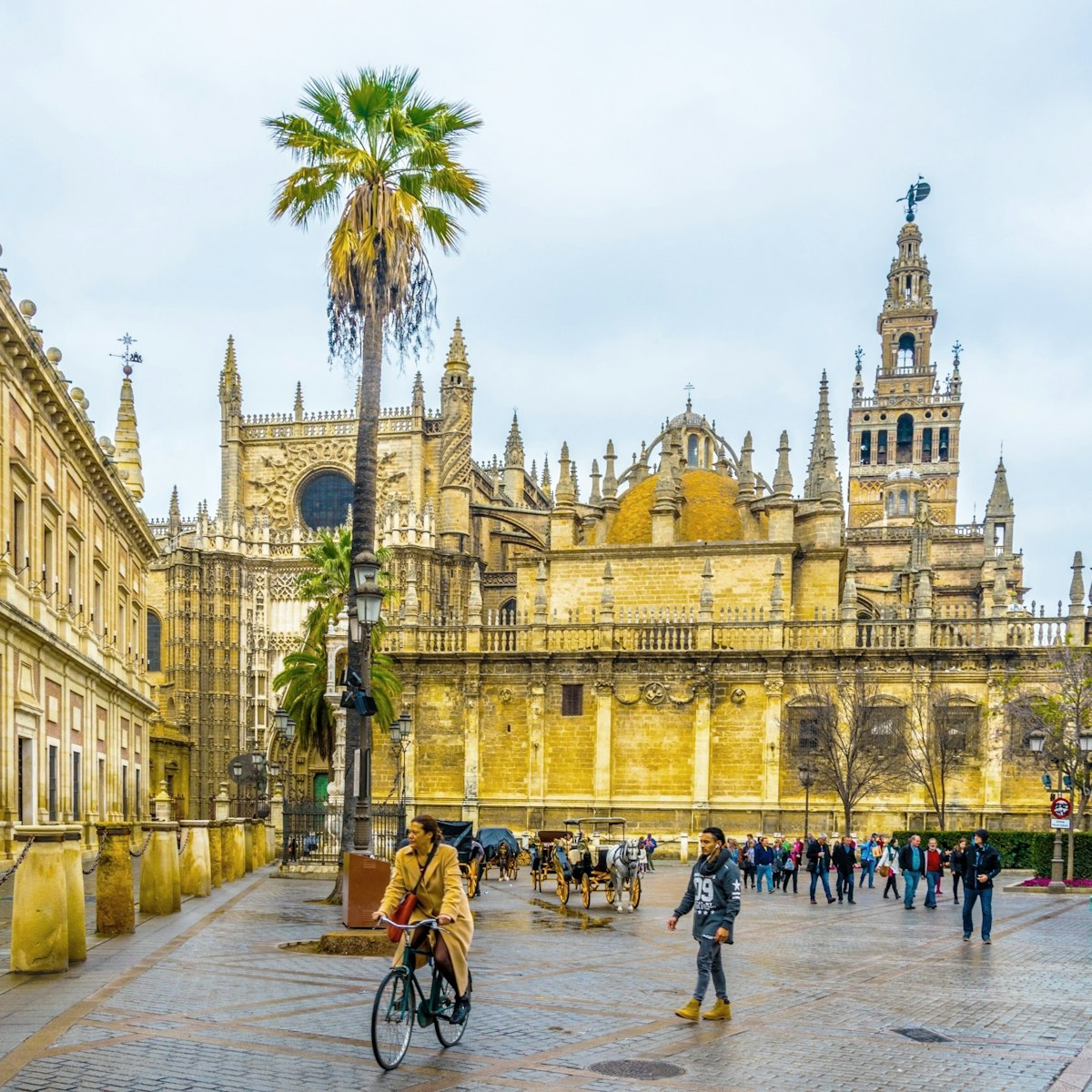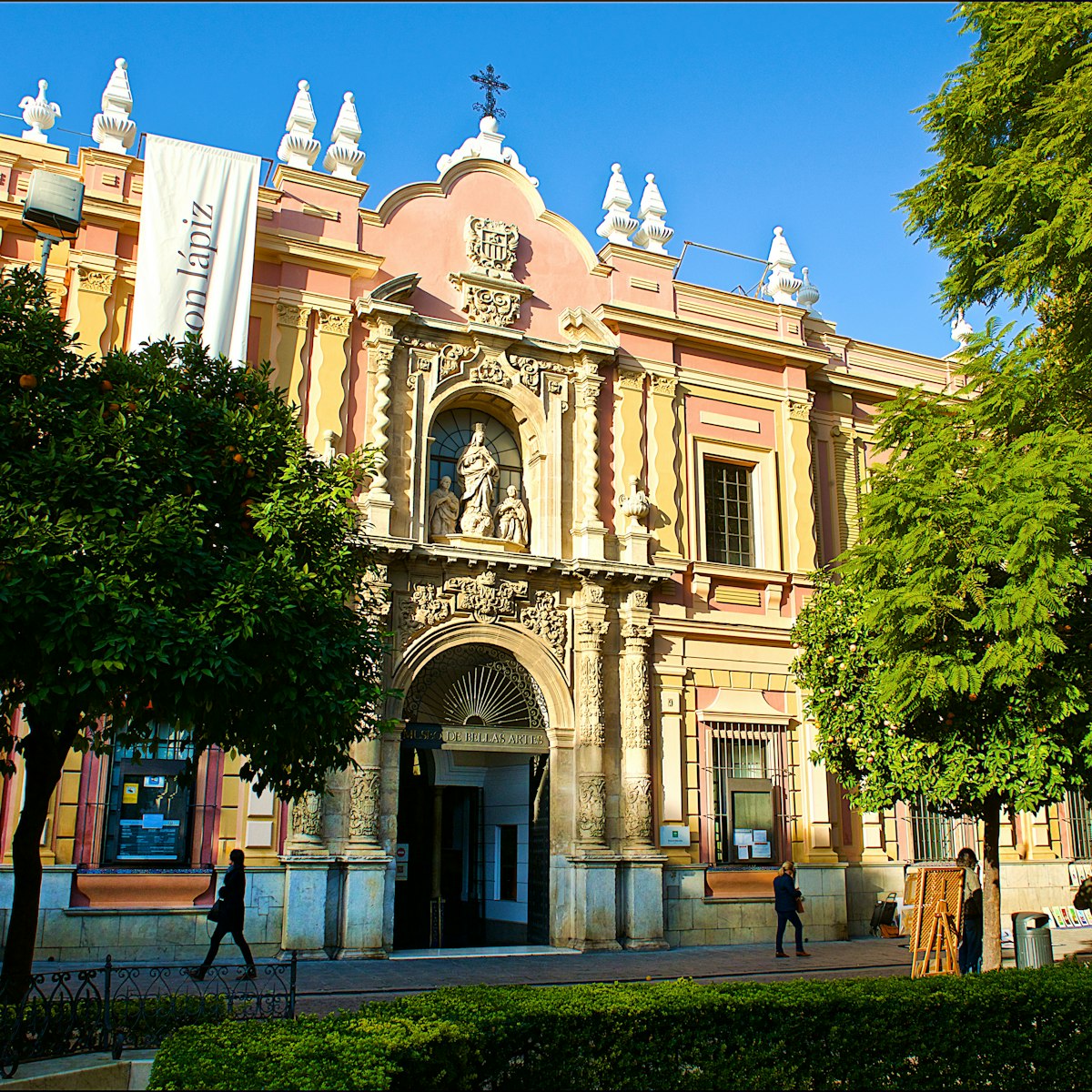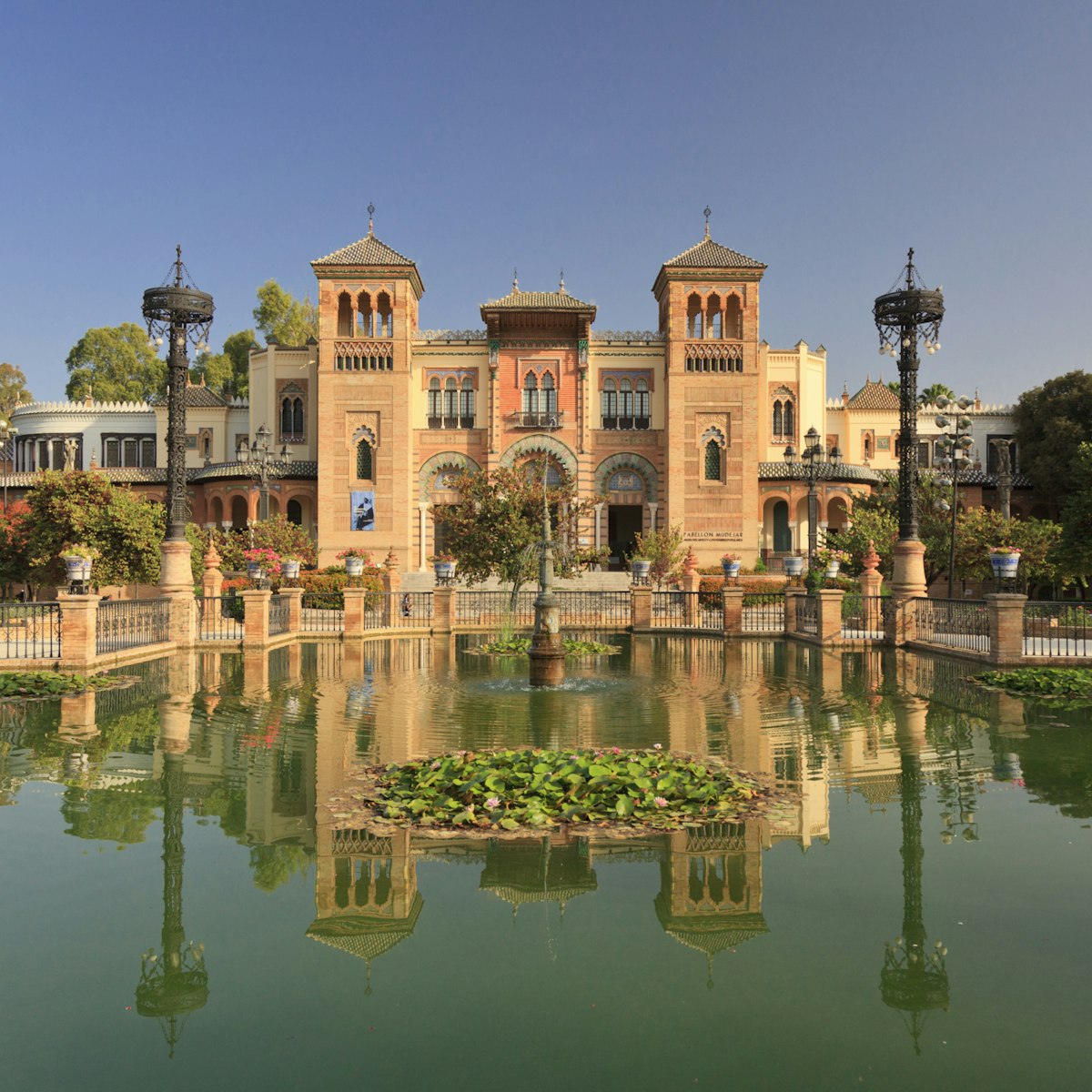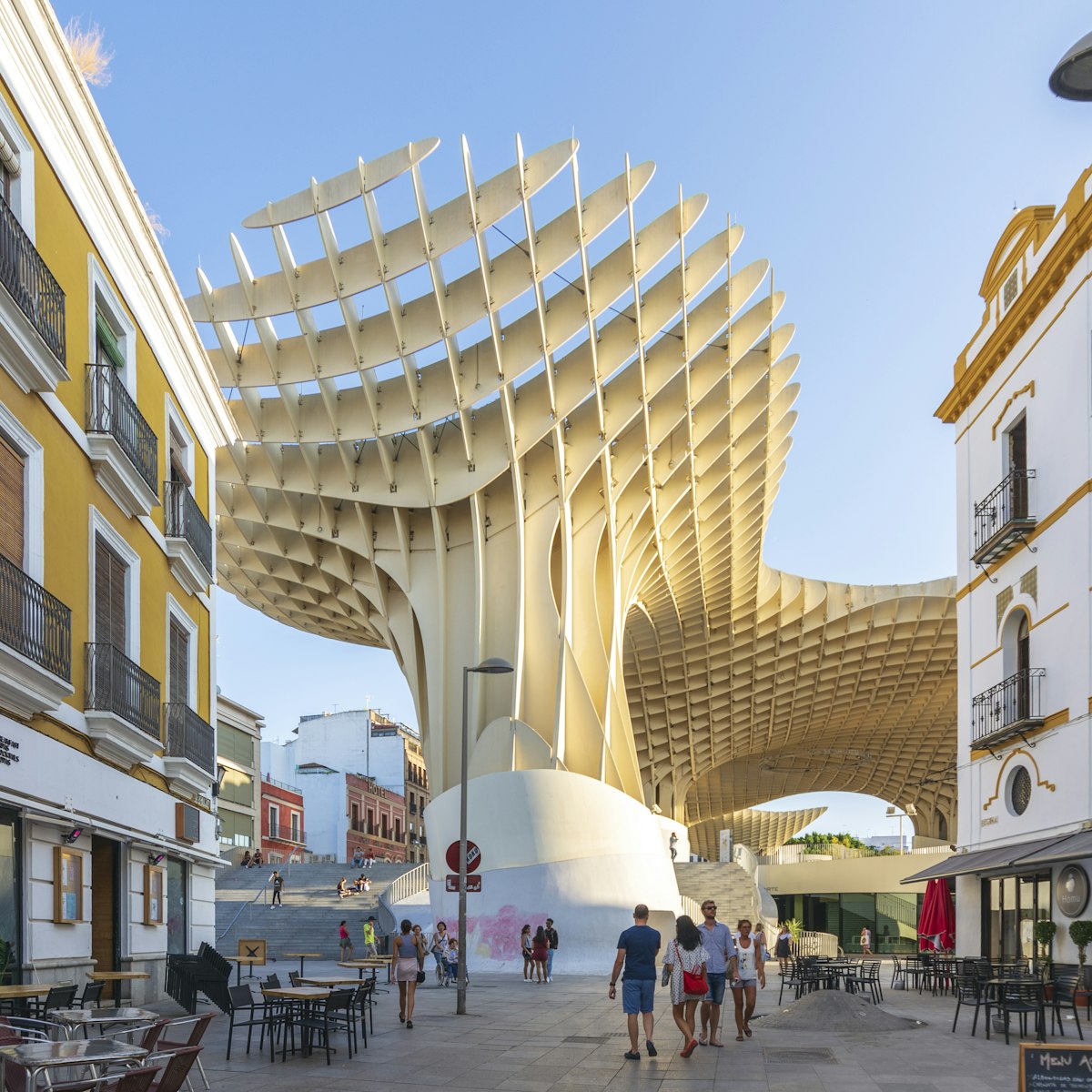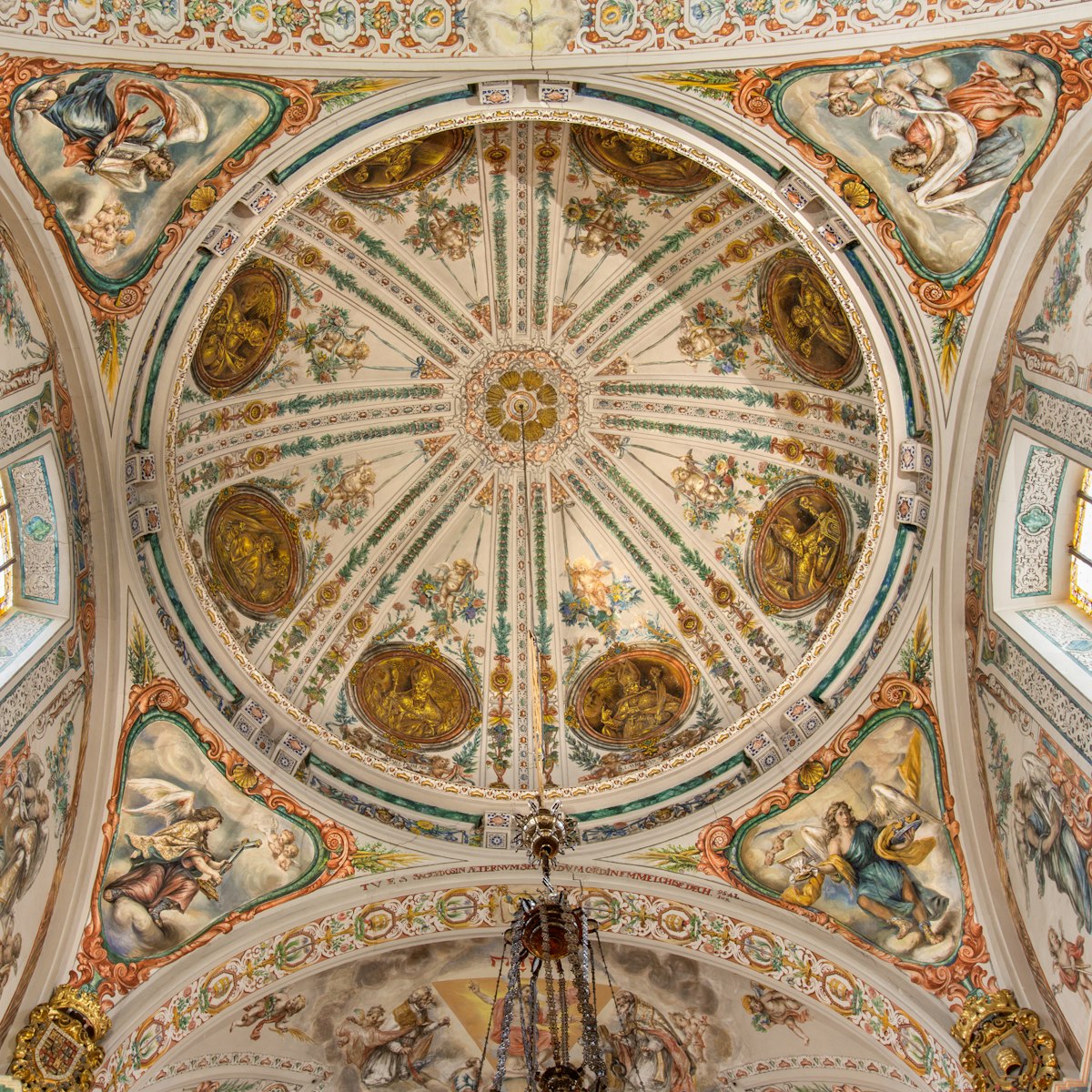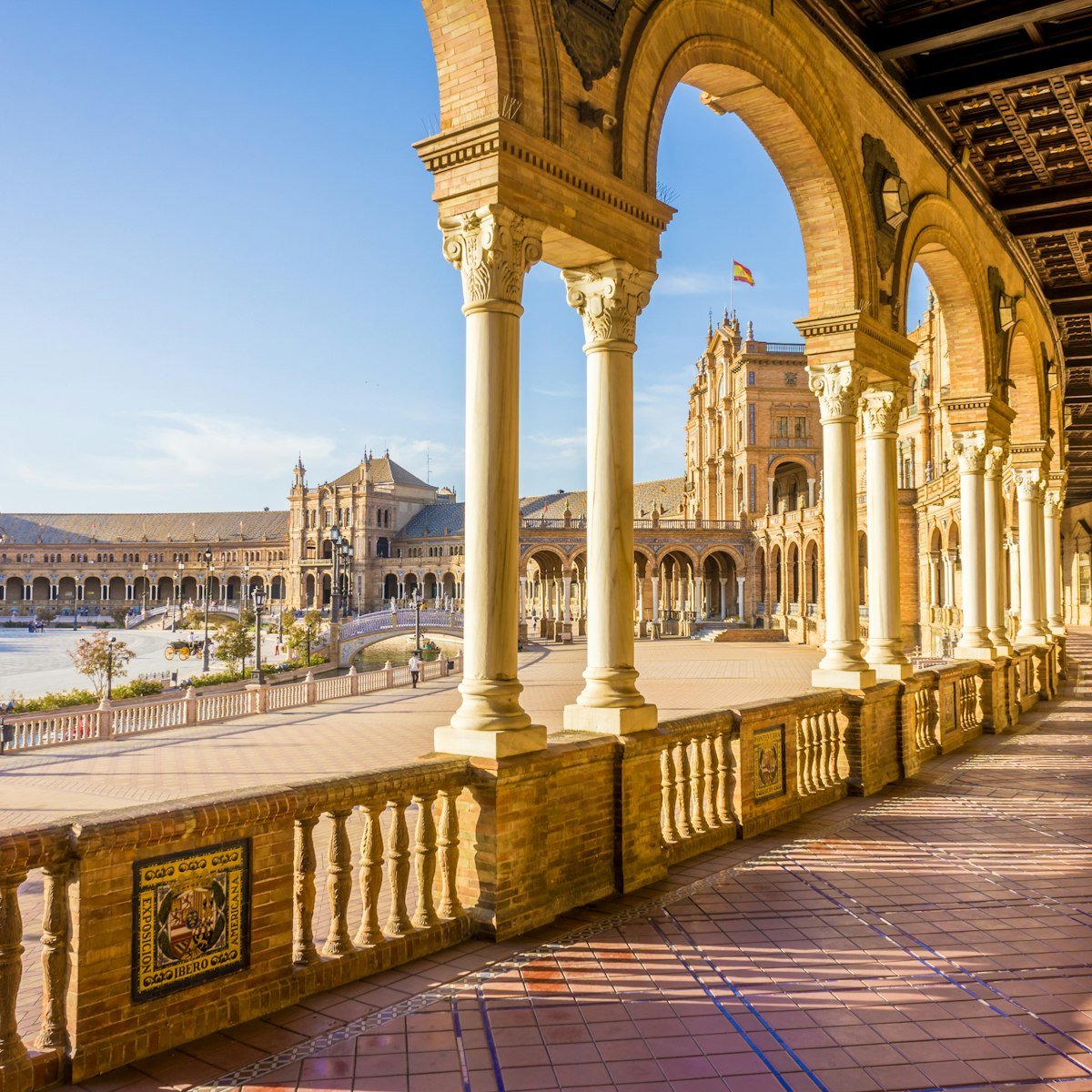A magnificent marriage of Christian and Mudéjar architecture, Seville’s royal palace complex is a breathtaking spectacle. The site, which was originally developed as a fort in 913, has been revamped many times over the 11 centuries of its existence, most spectacularly in the 14th century when King Pedro added the sumptuous Palacio de Don Pedro, still today the Alcázar’s crowning glory. More recently, the Alcázar featured as a location for the Game of Thrones TV series.
Note that long entry queues are the norm here. To cut waiting time, it pays to pre-purchase tickets at www.alcazarsevilla.org.
The Alcázar started life in the 10th century as a fort for the Cordoban governors of Seville but it was in the 11th century that it got its first major rebuild. Under the city’s Abbadid rulers, the original fort was enlarged and a palace known as Al-Muwarak (the Blessed) was built in what’s now the western part of the complex. Subsequently, the 12th-century Almohad rulers added another palace east of this, around what’s now the Patio del Crucero. The Christian king Fernando III moved into the Alcázar when he captured Seville in 1248, and several later monarchs used it as their main residence. Fernando’s son Alfonso X replaced much of the Almohad palace with a Gothic one and then, between 1364 and 1366, Pedro I created his stunning namesake palace.
Patio del León
Entry to the complex is through the Puerta del León (Lion Gate) on Plaza del Triunfo. Passing through the gateway, which is flanked by crenellated walls, you come to the Patio del León (Lion Patio), which was the garrison yard of the original Al-Muwarak palace. Off to the left before the arches is the Sala de la Justicia (Hall of Justice), with beautiful Mudéjar plasterwork and an artesonado (ceiling of interlaced beams with decorative insertions). This room was built in the 1340s by the Christian king Alfonso XI, who disported here with one of his mistresses, Leonor de Guzmán, reputedly the most beautiful woman in Spain. It leads to the pretty Patio del Yeso, part of the 12th-century Almohad palace reconstructed in the 19th century.
Patio de la Montería
Dominated by the facade of the Palacio de Don Pedro, the Patio de la Monteria owes its name (The Hunting Courtyard) to the fact that hunters would meet here before hunts with King Pedro. Rooms on the western side of the square were part of the Casa de la Contratación (Contracting House), founded in 1503 to control trade with Spain’s American colonies. The Salón del Almirante (Admiral’s Hall) houses 19th- and 20th-century paintings showing historical events and personages associated with Seville. The room off its northern end has an international collection of beautiful, elaborate fans. The Sala de Audiencias (Chapter House) is hung with tapestry representations of the shields of Spanish admirals and Alejo Fernández’ celebrated 1530s painting Virgen de los mareantes (Madonna of the Seafarers).
Cuarto Real Alto
The Alcázar is still a royal palace. In 1995 it hosted the wedding feast of Infanta Elena, daughter of King Juan Carlos I, after her marriage in Seville’s cathedral. The Cuarto Real Alto (Upper Royal Quarters), the rooms used by the Spanish royal family on their visits to Seville, are open for guided tours (€4.50; half hourly 10am to 1.30pm; booking required). Highlights of the tours, which are conducted in either Spanish or English, include the 14th-century Salón de Audiencias, still the monarch’s reception room, and Pedro I’s bedroom, with marvellous Mudéjar tiles and plasterwork.
Palacio de Don Pedro
This palace, also known as the Palacio Mudéjar, is Seville's single most stunning architectural feature.
King Pedro, though at odds with many of his fellow Christians, had a long-standing alliance with the Muslim emir of Granada, Mohammed V, the man responsible for much of the decoration at the Alhambra. So when Pedro decided to build a new palace in the Alcázar in 1364, Mohammed sent many of his top artisans. These were joined by others from Seville and Toledo. Their work, drawing on the Islamic traditions of the Almohads and caliphal Córdoba, is a unique synthesis of Iberian Islamic art.
Inscriptions on the palace’s facade encapsulate the collaborative nature of the enterprise. While one, in Spanish, announces that the building’s creator was the ‘highest, noblest and most powerful conqueror Don Pedro, by God's grace King of Castilla and León', another proclaims repeatedly in Arabic that ‘there is no conqueror but Allah'.
At the heart of the palace is the sublime Patio de las Doncellas (Patio of the Maidens), surrounded by beautiful arches, plaster work and tiling. The sunken garden in the centre was uncovered by archaeologists in 2004 from beneath a 16th-century marble covering.
To the north of the patio, the Alcoba Real (Royal Quarters) feature stunningly beautiful ceilings and wonderful plaster and tile work. Its rear room was probably the monarch’s summer bedroom.
Continuing on brings you to the covered Patio de las Muñecas (Patio of the Dolls), the heart of the palace’s private quarters, featuring delicate Granada-style decoration; indeed, plaster work was actually brought here from the Alhambra in the 19th century, when the mezzanine and top gallery were added for Queen Isabel II. The Cuarto del Príncipe (Prince’s Suite), to its north, has an elaborate gold ceiling intended to recreate a starlit night sky.
The most spectacular room in the Palacio, and indeed the whole Alcázar, is the Salón de Embajadores (Hall of Ambassadors), south of the Patio de las Muñecas. This was originally Pedro I’s throne room, although the fabulous wooden dome of multiple star patterns, symbolising the universe, was added later in 1427. The dome’s shape gives the room its alternative name, Sala de la Media Naranja (Hall of the Half Orange).
On the western side of the Salón, the beautiful Arco de Pavones, named after its peacock motifs, leads onto the Salón del Techo de Felipe II, with a Renaissance ceiling (1589–91), and beyond, to the Jardín del Príncipe (Prince's Garden).
Palacio Gótico (Salones de Carlo V)
Reached via a staircase at the southeastern corner of the Patio de las Doncellas is Alfonso X’s much remodelled 13th-century Gothic palace. The echoing halls here were designed for the 16th-century Spanish king Carlos I and are now known as the Salones de Carlos V (after his second title as Holy Roman Emperor Charles V). Of the rooms, the most striking is the Salone de los Tapices, a vaulted hall with a series of vast tapestries.
Patio del Crucero
Beyond the Salone de los Tapices, the Patio del Crucero was originally the upper storey of a patio from the 12th-century Almohad palace. Initially it consisted only of raised walkways along its four sides and two cross-walkways that met in the middle. Below grew orange trees, whose fruit could be plucked at hand height by the lucky folk strolling along the walkways. The patio’s lower level was built over in the 18th century after it suffered earthquake damage.
Gardens
On the other side of the Salone de los Tapices are the Alcázar’s gardens. Formal gardens with pools and fountains sit closest to the palace. From one, the Jardín de la Danza (Garden of the Dance), a passage runs beneath the Salones de Carlos V to the photogenic Baños de Doña María de Padilla (María de Padilla Baths). These are the vaults beneath the Patio del Crucero – originally the patio’s lower level – with a grotto that replaced the patio’s original pool.
One of the gardens' most arresting feature is the Galeria de Grutesco, a raised gallery with porticoes fashioned in the 16th century out of an old Islamic-era wall. There is also a fun hedge maze, which will delight children. The gardens to the east, beyond a long wall, are 20th-century creations, but no less heavenly for it.
